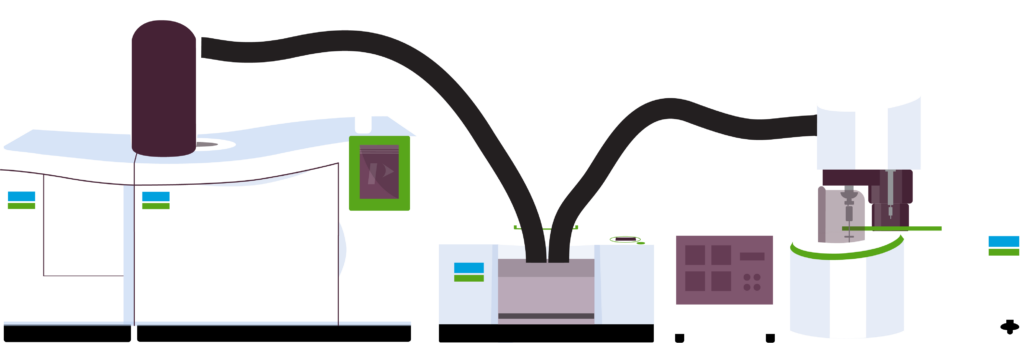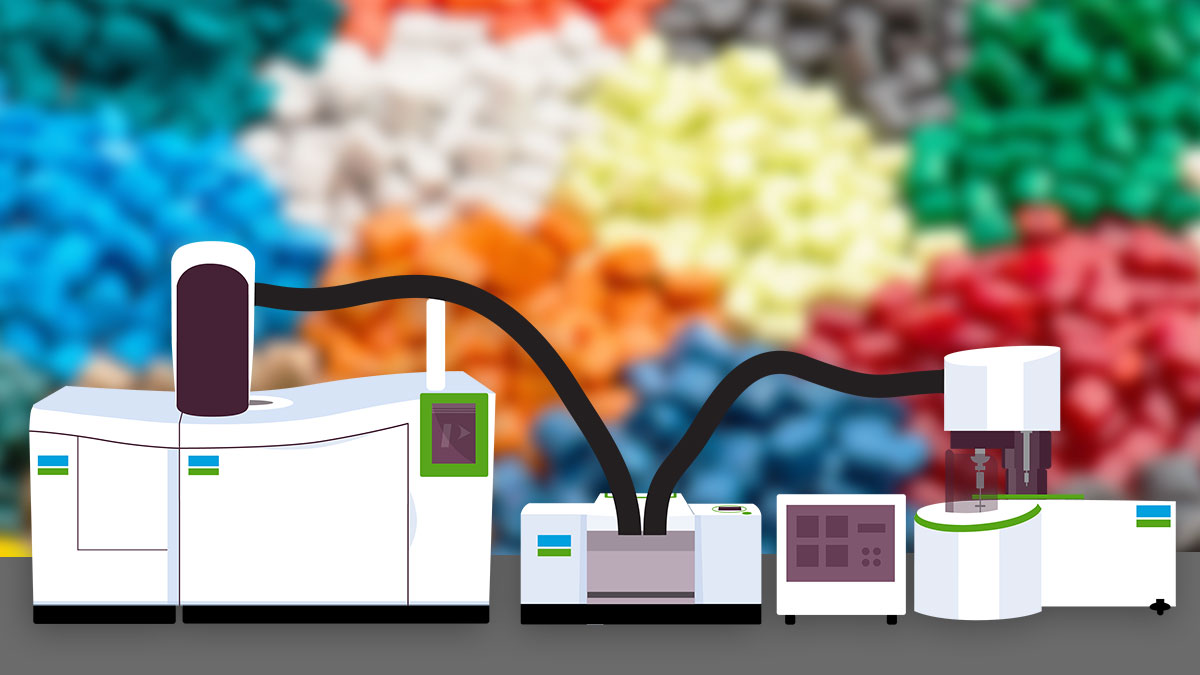How Hyphenation Creates Advanced Single-Run Polymer Analysis
Polymer lifecycle companies rely on in-depth sample characterization in order to support accurate decision making on the production floor and in the research and development lab. Scientists must use a range of analytical technologies in order to provide the specific data needed at different points in the manufacturing process. With such diverse testing needs, analytical scientists must use multiple technologies to provide the depth and breadth of data required.
A streamlined analytical workflow helps a lab optimize turnaround time and efficiency, which in turn enhances the efficiency and profitability of the company. But developing streamlined workflows can be difficult when so many different instruments are needed.
The Single-Run Solution
Hyphenation is the coupling of two or more instruments to create a seamless workflow that generates multiple types of data in a single run. A hyphenated workflow improves efficiency and turnaround time and supports better product performance while reducing costs that come with material, process, or product failure.
The need to fully characterize gases emitted from polymer materials is a perfect example of the power and versatility of hyphenation. Evolved gas analysis (EGA) hyphenation combines a thermogravimetric analyzer (TGA) instrument with one or more additional detector technologies, such as Fourier transform (FT), infrared (IR), mass spectrometry (MS), and/or gas chromatography (GC)/MS.

The most powerful combination hyphenates all of these technologies into a single, streamlined workflow. The power of this hyphenation is its ability to carry out in-depth characterization of the evolved gases.
- TGA: The thermogravimetric analyzer measures the decomposition of the material based on weight loss during heating. This information is important to understanding the thermal stability of the polymer.
- TG-IR: To gain more insights into what specific decomposition products are released during heating, an IR spectrometer is hyphenated to the TGA. This information is important for R&D, safety analysis, regulatory compliance, and other applications.
- TG-MS: Hyphenating a mass spectrometer to TGA adds the ability to detect very low levels of volatile impurities in real time. This is important for process and product quality control, safety analysis, and R&D.
- TG-GC/MS: Hyphenating a gas chromatograph to TG-MS adds the ability to separate the components of mixtures and detect very low levels of both known and unknown chemicals. TG-GC/MS provides detailed, actionable data for quality control, safety analysis, and product development.
- TG-IR-GC/MS: Hyphenating further to TG-IR-GC/MS is a formidable combination that provides separation, identification, and trace-level quantification of evolved gases in a single workflow. It is important in determining the primary components of unknown mixtures and identifying additives and contaminants. This information is used to evaluate competitor products, determine compliance with regulations, and understand a material’s composition.
Hyphenated workflows such as this provide in-depth information in less time than is possible using each technology individually.
Seamless and Customizable
Although seamless, these hyphenations maintain the versatility that allows quick customization of the workflow. For example, it is easy to quickly switch from TG-IR mode to TGA and/or IR only, from TG-MS mode to TGA and/or MS only, and so forth throughout the fully hyphenated TG-IR-GC/MS workflow.
Hyphenation is a powerful, versatile tool for companies at each step of the polymer lifecycle.

